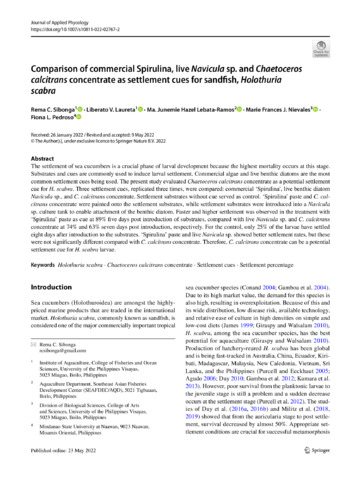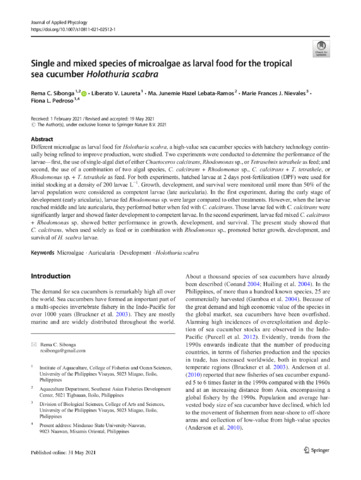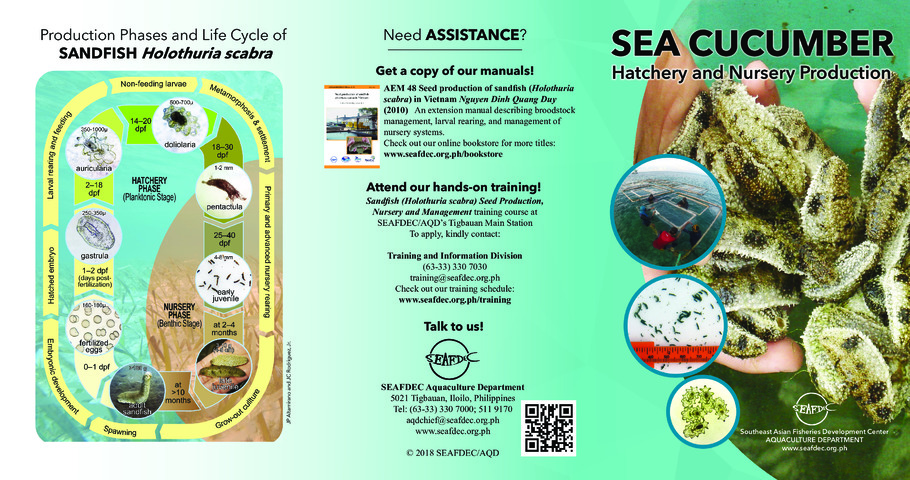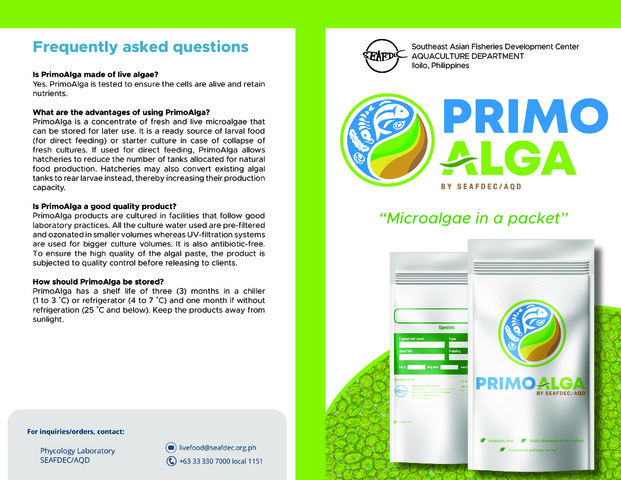Comparison of commercial Spirulina, live Navicula sp. and Chaetoceros calcitrans concentrate as settlement cues for sandfish, Holothuria scabra
Share
စိတ္တဇ
The settlement of sea cucumbers is a crucial phase of larval development because the highest mortality occurs at this stage. Substrates and cues are commonly used to induce larval settlement. Commercial algae and live benthic diatoms are the most common settlement cues being used. The present study evaluated Chaetoceros calcitrans concentrate as a potential settlement cue for H. scabra. Three settlement cues, replicated three times, were compared: commercial ‘Spirulina’, live benthic diatom Navicula sp., and C. calcitrans concentrate. Settlement substrates without cue served as control. ‘Spirulina’ paste and C. calcitrans concentrate were painted onto the settlement substrates, while settlement substrates were introduced into a Navicula sp. culture tank to enable attachment of the benthic diatom. Faster and higher settlement was observed in the treatment with ‘Spirulina’ paste as cue at 89% five days post introduction of substrates, compared with live Navicula sp. and C. calcitrans concentrate at 74% and 63% seven days post introduction, respectively. For the control, only 25% of the larvae have settled eight days after introduction to the substrates. ‘Spirulina’ paste and live Navicula sp. showed better settlement rates, but these were not significantly different compared with C. calcitrans concentrate. Therefore, C. calcitrans concentrate can be a potential settlement cue for H. scabra larvae.
Suggested Citation
Sibonga, R., Laureta, L. V., Lebata-Ramos, M. J. H., Nievales, M., & Pedroso, F. (2022). Comparison of commercial Spirulina, live Navicula sp. and Chaetoceros calcitrans concentrate as settlement cues for sandfish, Holothuria scabra. Journal of Applied Phycology , 34, 2099-2105. https://doi.org/10.1007/s10811-022-02767-2
ဘာသာရပ်
Taxonomic term
စုစည်းမှုများ စုစည်းမှုများ
- AQD Journal Articles [1249]
Related items
Showing items related by title, author, creator and subject.
-
Single and mixed species of microalgae as larval food for the tropical sea cucumber Holothuria scabra
Sibonga, Rema; Laureta, Liberato V.; Lebata-Ramos, Ma. Junemie Hazel; Nievales, Marie Frances J.; Pedroso, Fiona L. (Springer, 2021-05-31)Different microalgae as larval food for Holothuria scabra, a high-value sea cucumber species with hatchery technology continually being refined to improve production, were studied. Two experiments were conducted to determine ... -
Sea cucumber hatchery and nursery production
Southeast Asian Fisheries Development Center, Aquaculture Department (Aquaculture Department, Southeast Asian Fisheries Development Center, 2018)Contains information on the hatchery and nursery culture of the sea cucumber, Holothuria scabra. -
PrimoAlga
အမည်မသိစာရေးဆရာ (Aquaculture Department, Southeast Asian Fisheries Development Center, 2024)






